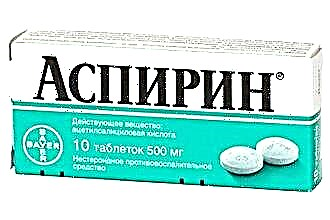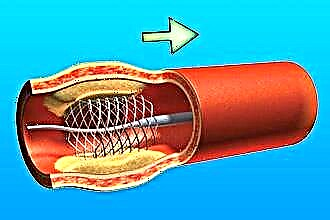 Abscesses are formed as a result of infection of the mucous membranes of the ENT organs with pyogenic bacteria, which destructively affect the state of the tissues and lead to their melting. Ulcers (abscesses) should be distinguished from empyema and phlegmon. In the first case, purulent exudate is formed in the natural cavity of the organ, in the second, the purulent masses are not limited to granulation tissue, but spread to the surrounding tissues. Untimely treatment of purulent inflammation is fraught with the evacuation of pathological exudate in the tissue of the pharynx, which can lead to the generalization of pathological processes and the development of systemic inflammation - sepsis.
Abscesses are formed as a result of infection of the mucous membranes of the ENT organs with pyogenic bacteria, which destructively affect the state of the tissues and lead to their melting. Ulcers (abscesses) should be distinguished from empyema and phlegmon. In the first case, purulent exudate is formed in the natural cavity of the organ, in the second, the purulent masses are not limited to granulation tissue, but spread to the surrounding tissues. Untimely treatment of purulent inflammation is fraught with the evacuation of pathological exudate in the tissue of the pharynx, which can lead to the generalization of pathological processes and the development of systemic inflammation - sepsis.
Pathogenesis
What is an abscess? An abscess (abscess) is the melting of soft tissues with the subsequent formation of a purulent cavity in the mucous membranes of the airways. The development of pathological reactions is associated with the penetration of clostridia, bacterioids and anaerobic purulent bacteria into the body.
In the process of changing the morphology of the mucous epithelium around the focus of inflammation, granulation and fibrous tissue is formed, which prevents the penetration of pus into healthy tissues. As a result, an abscess is formed at the site of the lesion, the contents of which consist of pathogens, macrophages, neutrophils and other types of immune cells. A subsequent increase in the volume of purulent exudate in the capsule can lead to rupture of fibrous tissues and the penetration of pathological secretions deep into the throat.
Prevention of local complications and deterioration of the patient's well-being is made possible by timely therapy, which consists in draining the abscess and then taking antimicrobial agents. Delayed treatment of pathology can entail formidable consequences, in particular, phlegmon of the neck, lymphadenitis, sepsis or meningitis.
Etiology
Why is there an abscess in the throat? The key reason for the development of purulent inflammation in the tissues is the untimely treatment of local ENT diseases. With tonsilogenic penetration of pathogens, the palatine tonsils are most often affected, as a result of which the periaminal fiber is exposed to inflammation. The reason for the active reproduction of pyogenic bacteria in the body is a decrease in immunity, which can be caused by:
- hypovitaminosis;
- hypothermia;
- chronic inflammation;
- dysbiosis;
- autoimmune disruptions;
- drug abuse.
The likelihood of a purulent abscess in the throat increases adenoiditis, diabetes mellitus, chronic tonsillitis and sinusitis.
As a rule, the formation of an abscess in the tissues of the throat, pharynx and larynx is preceded by infectious ENT diseases - lacunar and follicular tonsillitis, bacterial pharyngitis, laryngitis, tracheitis, sinusitis, etc. Mechanical trauma to the mucous membrane of the oropharynx, pulpitis, gingivitis, stomatitis and other dental pathologies can provoke suppuration.
Clinical picture
Symptoms of pathology appear immediately after the formation of a purulent capsule with pathological contents inside. The intensity of pain and discomfort depends on the depth of soft tissue damage, the localization of the lesion and the nature of suppuration. Typical manifestations of purulent-inflammatory reactions in the throat include:
- myalgia;
- drowsiness;
- lack of appetite;
- lump syndrome in the throat;
- soreness when swallowing;
- lymph node hypertrophy;
- nasal voice;
- subfebrile fever;
- labored breathing;
- sore throat radiating to the ear;
- tonic cramps of the chewing muscles;
- throwing the duodenal contents into the pharynx.
Large abscesses, partially blocking the airways, cause pain when turning the neck.
Local symptoms of an abscess are visualized near the tonsils and on the back of the throat. Hyperemia, swelling and granular mucous membranes indicate the presence of inflammatory reactions.
Spontaneous opening of abscesses facilitates the patient's well-being, however, with partial evacuation of purulent masses, the abscess is often formed again.
Retropharyngeal abscess
Retropharyngeal abscess - pathological changes in the soft tissues of the pharyngeal space. As a rule, associations of pyogenic microbes penetrate the throat mucosa with lymph flow from the auditory tube (tubootitis), the auditory analyzer (otitis media) or the nasopharynx (sinusitis, sinusitis). In most cases, a retropharyngeal abscess is preceded by such infectious diseases as influenza, diphtheria, scarlet fever, etc.
Symptoms of pathology can be confused with the clinical manifestations of paratonsillitis, therefore, when pathological signs appear, it is desirable to have a proty examination by an otolaryngologist. For a retropharyngeal abscess, complaints of sharp pains in the pharynx when swallowing and eating are characteristic. In the case of localization of the abscess in the nasopharynx, patients may complain of shortness of breath, nasal voice and headaches.
The spread of foci of inflammation on the tissue of the pharynx leads to inspiratory dyspnea, which manifests itself when the patient's body is upright.
It is possible to eliminate an abscess in the mucous membrane of the respiratory system only by surgery.
Untimely surgery entails spontaneous opening of the abscess. The evacuation of purulent masses into the laryngeal cavity can lead to acute hypoxia or suffocation.
Paratonsillar abscess
A paratonsillar abscess is a purulent inflammation of the peri-rectal tissue. Purulent-inflammatory reactions occur due to the penetration of virulent microorganisms into the lymphoid tissues of the pharynx. Pathogens enter the paratonsillar area from the palatine tonsil, which communicates with the surrounding tissues through lacunae. There are many lymphatic pathways in the glands, through which the pathogenic flora penetrates deep into the periaminal fiber, causing inflammation.
In the course of a microbiological study, it turned out that various associations of microbes are most often localized in the foci of inflammation. An abscess in the throat causes the following local and general symptoms:
- spasm of the chewing muscles;
- febrile fever;
- sharp pain when swallowing;
- hypertrophy of the submandibular lymph nodes;
- labored breathing;
- general weakness;
- profuse salivation.
The pharyngoscopic picture is determined by the stage of development and the form of pathology. In the edematous-infiltrative phase of the development of paratonsillitis, hyperemia (redness) and infiltration of the mucous epithelium are diagnosed. In the phase of abscess formation in the pharynx, asymmetry occurs, the uvula increases and shifts somewhat towards healthy tissues, which leads to a partial overlap of the airways.
Important! Failure to comply with preventive measures often leads to a relapse of inflammation and re-formation of an abscess.
It is possible to eliminate purulent foci in the throat with antibiotics and surgical treatment. However, it should be noted that when the abscess is opened, the incision hole may stick together. To completely remove purulent exudate from the tissues, drainage is performed for several days.
Periopharyngeal abscess
 Periopharyngeal abscess of the throat is a limited purulent lesion of the tissues of the periopharyngeal space.Pathology most often occurs as a complication of purulent-inflammatory reactions in the oropharynx and middle ear. The causative agent of the infection is non-clostridial representatives of the pathogenic flora - Staphylococcus aureus or fusiform bacillus.
Periopharyngeal abscess of the throat is a limited purulent lesion of the tissues of the periopharyngeal space.Pathology most often occurs as a complication of purulent-inflammatory reactions in the oropharynx and middle ear. The causative agent of the infection is non-clostridial representatives of the pathogenic flora - Staphylococcus aureus or fusiform bacillus.
In 37% of cases, inflammation of the periopharyngeal tissues is observed against the background of paratonsillitis or mastoiditis. Much less often, pathology develops as a result of a breakthrough of an abscess, localized in the palatine tonsil.
If the rules of postoperative therapy are not followed, an abscess may form a few days after tonsillectomy.
Typical manifestations of purulent-inflammatory reactions in the tissues of the throat include:
- high fever;
- hypertrophy of the glands;
- difficulty swallowing;
- pain when moving the head;
- swelling of the neck and lymph nodes.
Treatment of pathology involves surgical intervention from the pharynx, in which the abscess is opened, and purulent exudate is pumped out with a syringe. After the operation, the patient is prescribed antibacterial therapy with a wide spectrum of drugs. If necessary, the patient is injected with anti-gangrenous serum, which prevents infection of the blood and periopharyngeal tissues.
Diagnostics
A superficial abscess can be diagnosed by visual examination of the patient's oropharynx. But in about 46% of cases, an internal abscess is formed in the tissues of the throat, which can only be detected during an apparatus examination of the patient. To diagnose pathology and determine the stage of development of purulent-inflammatory reactions, the following types of examination can be prescribed:
- computed tomography (CT) - a layer-by-layer examination of the ENT organs, during which a specialist receives images of tissues at the site of localization of abscesses;
- X-ray - photographing the respiratory system using X-rays;
- blood test - a laboratory test, during which the number of platelets, erythrocytes and white blood cells in the blood is determined;
- ultrasound examination (ultrasound) - obtaining a two-dimensional image of the throat using high-frequency sound waves;
- magnetic resonance imaging (MRI) - diagnostics of ENT organs, during which not ionizing radiation is used, but a safe magnetic field and radio frequency pulses.
 A biochemical blood test allows you to determine the concentration of immunocompetent cells in the plasma. A high density of leukocytes indicates the presence of inflammatory reactions in the body and, accordingly, a high probability of the formation of purulent foci in the ENT organs. Tissue images obtained during the passage of CT, ultrasound and MRI, allow you to accurately determine the location of the purulent foci and the degree of soft tissue damage.
A biochemical blood test allows you to determine the concentration of immunocompetent cells in the plasma. A high density of leukocytes indicates the presence of inflammatory reactions in the body and, accordingly, a high probability of the formation of purulent foci in the ENT organs. Tissue images obtained during the passage of CT, ultrasound and MRI, allow you to accurately determine the location of the purulent foci and the degree of soft tissue damage.
A trial puncture of an abscess allows you to determine the type of infectious agent and suitable drugs to eliminate the pathogenic flora.
Therapy
How to remove an abscess in the throat? Treatment methods should be determined only by a specialist after the patient has passed the necessary tests. Etiotropic therapy involves excision of tissues affected by inflammation or drainage of the pathological cavity. For the symptomatic treatment of purulent-inflammatory processes in the throat, the patient is prescribed:
- non-steroidal anti-inflammatory drugs (Flurbiprofen, Nabumeton) - interfere with the synthesis of inflammatory mediators, thereby accelerating the regression of purulent-inflammatory reactions;
- antipyretics ("Paracetamol", "Gewadal") - eliminate subfebrile and febrile fever;
- analgesics (Andipal, Kalpol) - eliminate pain and discomfort when swallowing;
- antihistamines ("Fenkarol", "Lomilan") - relieve swelling and inflammation, resulting in easier breathing.
Complex treatment of abscesses prevents the spread of microbial flora, as a result of which the regression of inflammation and epithelialization of the affected tissues is accelerated.

 Local symptoms of an abscess are visualized near the tonsils and on the back of the throat. Hyperemia, swelling and granular mucous membranes indicate the presence of inflammatory reactions.
Local symptoms of an abscess are visualized near the tonsils and on the back of the throat. Hyperemia, swelling and granular mucous membranes indicate the presence of inflammatory reactions.

